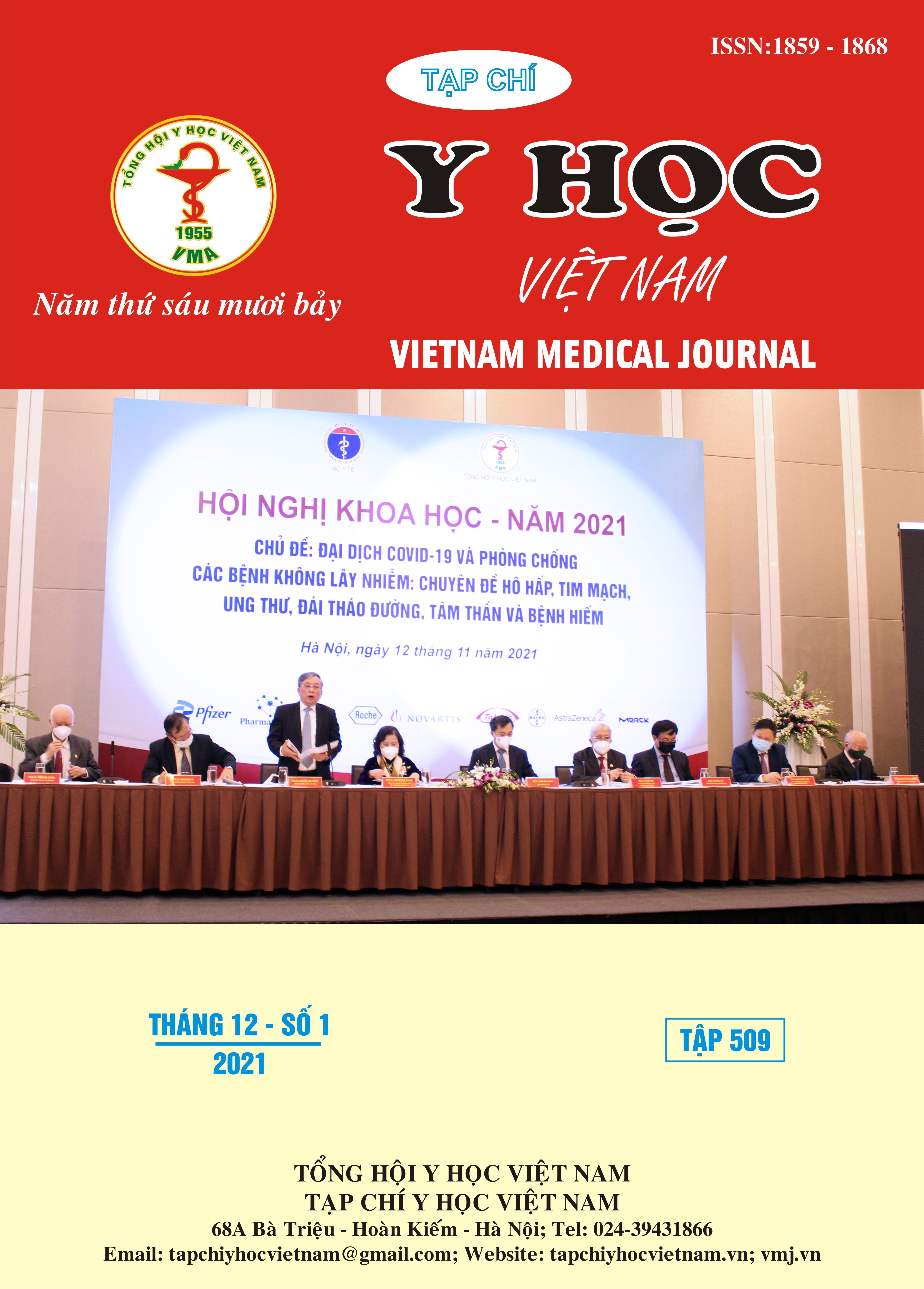CHARACTERISTICS AND OUTCOMES IN THE TREATMENT OF SEVERE PNEUMONIA WITH ADENOVIRUS POSITIVE SPUTUM - PCR RESULTS IN CHILDREN AGED FROM 2 MONTH TO 5 YEARS IN CHILDREN'S HOSPITAL 1
Main Article Content
Abstract
Objectives: To describe the characteristics and the outcomes in treating severe pneumonia cases with adenovirus positive sputum PCR results. Subjects and methods: The retrospective study was conducted concerning a series of 55 children cases from 2 months to 5 years old at Children's Hospital 1 from April 2018 to March 2020. Results: About a third of cases require mechanical ventilation and nearly a half of them died. Factors associated with the risk of mechanical ventilation include: young age (≤ 12 months), prolonged fever, hepatomegaly, shock, leukopenia, elevated liver enzymes, and the high number of adenovirus copies, especially above 72500 x103 copies. 80% of cases require the use of three or more antibiotics which are all broad-spectrum antibiotics. Median hospital stay is 25 days. The most common complication is sepsis (45.5%). The mortality rate in the study is 16.4%. Some related factors such as the rate of hepatomegaly, leukopenia, anemia, increased AST > 100U/L, mechanical ventilation, sepsis, shock… are higher in the mortality group than in the survival group, the difference is statistically significant. Conclusion: Severe adenovirus pneumonia in children under 5 years of age shows a severe progression. The hospital stay in those cases is long and the mortality rate is high, despite intensive treatments with respiratory support and broad-spectrum antibiotics.
Article Details
Keywords
pneumonia, adenovirus, polymerase chain reaction, children
References
2. Li L., Woo Y. Y., de Bruyne J. A., et al. (2018), "Epidemiology, clinical presentation and respiratory sequelae of adenovirus pneumonia in children in Kuala Lumpur, Malaysia", PLoS One, 13(10), pp. e0205795.
3. Liu L., Oza S., Hogan D., et al. (2016), "Global, regional, and national causes of under-5 mortality in 2000-15: an updated systematic analysis with implications for the Sustainable Development Goals", Lancet, 388(10063), pp. 3027-35.
4. Shi J., Zhou Y., Wang F., et al. (2020), "A case series of children with adenovirus pneumonia: three-year experiences in a tertiary PICU", BMC Pediatr, 20(1), pp. 375.
5. Xie L., Zhang B., Zhou J., et al. (2018), "Human adenovirus load in respiratory tract secretions are predictors for disease severity in children with human adenovirus pneumonia", Virol J, 15(1), pp. 123.
6. Zampoli M. and Mukuddem-Sablay Z. (2017), "Adenovirus-associated pneumonia in South African children: Presentation, clinical course and outcome", S Afr Med J, 107(2), pp. 123-26.


